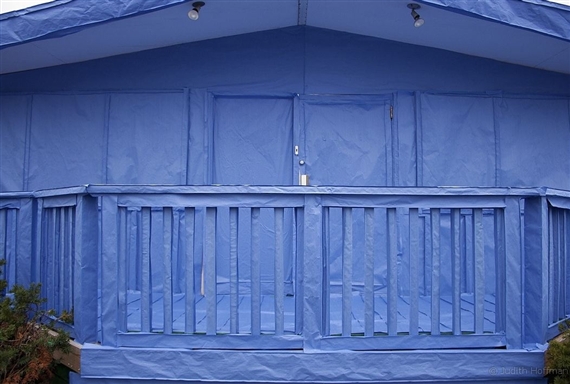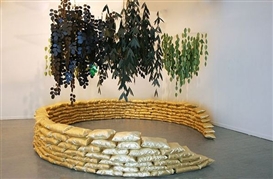The Art of Deconstruction: Building from Paper
Blending art with design, paper and a little imagination, artist Judith Hoffman builds her own вҖҳcastles in the air.вҖҷ Think children's paper and cardboard cities, all grown up. вҖңEnvironment is the central factor in my work. My surroundings and the complexities of location are heavy influences in what I build,вҖқ she says. The artist is referring to her large-scale paper constructions, which are replicas of modern structures.
әЪБПІ»ҙтмИ
04 Jan, 2012


Blending art with design, paper and a little imagination, artist builds her own вҖҳcastles in the air.вҖҷ Think children's paper and cardboard cities, all grown up. вҖңEnvironment is the central factor in my work. My surroundings and the complexities of location are heavy influences in what I build,вҖқ she says. The artist is referring to her large-scale paper constructions, which are replicas of modern structures. She then uses video to capture the decomposition of these paper installations. ItвҖҷs a multi-faceted tale of the modern metropolis that perfectly captures the ever-changing face of our contemporary world.

Her project is a four-stage process, where she painstakingly reconstructs buildings out of paper, 
Her work takes on a slightly different tone than many other artists who have sought to capture the city: вҖңIt seems like many artists working in Detroit either focus their eye on how that history has visually manifested itself or create works to trigger new hopes and experiences.вҖқ Hoffman's work does double-duty, incorporating both of these ideas. She says initially, this caused her some trepidation. вҖңAs an outsider, I felt incredibly nervous about entering into that discussion but as an individual, growth and decay, especially in man-made structures, are at the heart of my explorations.вҖқ Which is why the artistвҖҷs larger-than-life reconstructions (and deconstructions) are so aptly-fitting in this context.

Still, working with the media comes with its own set of challenges. Despite her five-week deadline and the overall enormity of the piece, the biggest obstacle regarding this installation was unpredictable weather. вҖңI foolishly budgeted a day [for installation] because I wanted the piece to be fresh for the opening and was nervous about rain and wind destroying it before anyone had seen it.вҖқ Yet despite her well-laid plans, Hoffman and her assistants battled mother nature anyway. вҖңAt five in the morning that day, I showed up to finish the last small pieces and at eight we began with the roof, which was finished and in place by nine, and had flown off by ten. The rest of the day was a epic battle between us and the wind. We won,вҖқshe adds, laughing.

While certainly one of her most ambitious projects, HoffmanвҖҷs work in Detroit was by no means her first foray into this unique assemblage of architecture. вҖңI had made a paper вҖҳslipcoverвҖҷ for the facade of a building in Nebraska (pictured above) and was invited to make another for the Quark Gallery,вҖқ she explains. вҖңI knew from the start that I wasnвҖҷt interested in recreating a piece partially because site is so important when installing public works. During the construction of another piece, I became interested in the translation of architecture from three to two dimensions because it simultaneously maps unexpected topologies and reorients the bodyвҖҷs perception of space. I had been looking for ways to categorize that extracted architecture without making a one-to-one re-presentation and was excited about the possibility of expanding the piece to an entire structure.вҖқ And the decay of the piece is just as essential - perhaps even more so - than the process involved to create it. вҖң...having had some space and time from the work, the video is the most important part of the piece because compressed time 
The artist continues to make varied installations that challenge or are in direct response to the environments surrounding her. In terms of the Detroit project, she says, her aim was to вҖңbring beauty and joy to a place in the city where it was never expected.вҖқ In addition to upcoming collaborative work with artist Loren Erdrich in Brooklyn, she plans to return to her residency at Sculpture Space in New York, to create a large-scale installation piece.
Hoffman's ultimate artistic goal is to make work that uses вҖңnatural materials to inject softness into areas of human harshness.вҖқ She hopes her art will вҖңcreate experiences that inspire response.вҖқ As a trendsetting artist in 2012, it seems her dreams are fast becoming a reality...mission accomplished! (Left: Dysmorphia, 2011) All works by Judith Hoffman; images courtesy of the artist.
Written by әЪБПІ»ҙтмИ Writer Lauren Meir

 ARTISTS
ARTISTS







